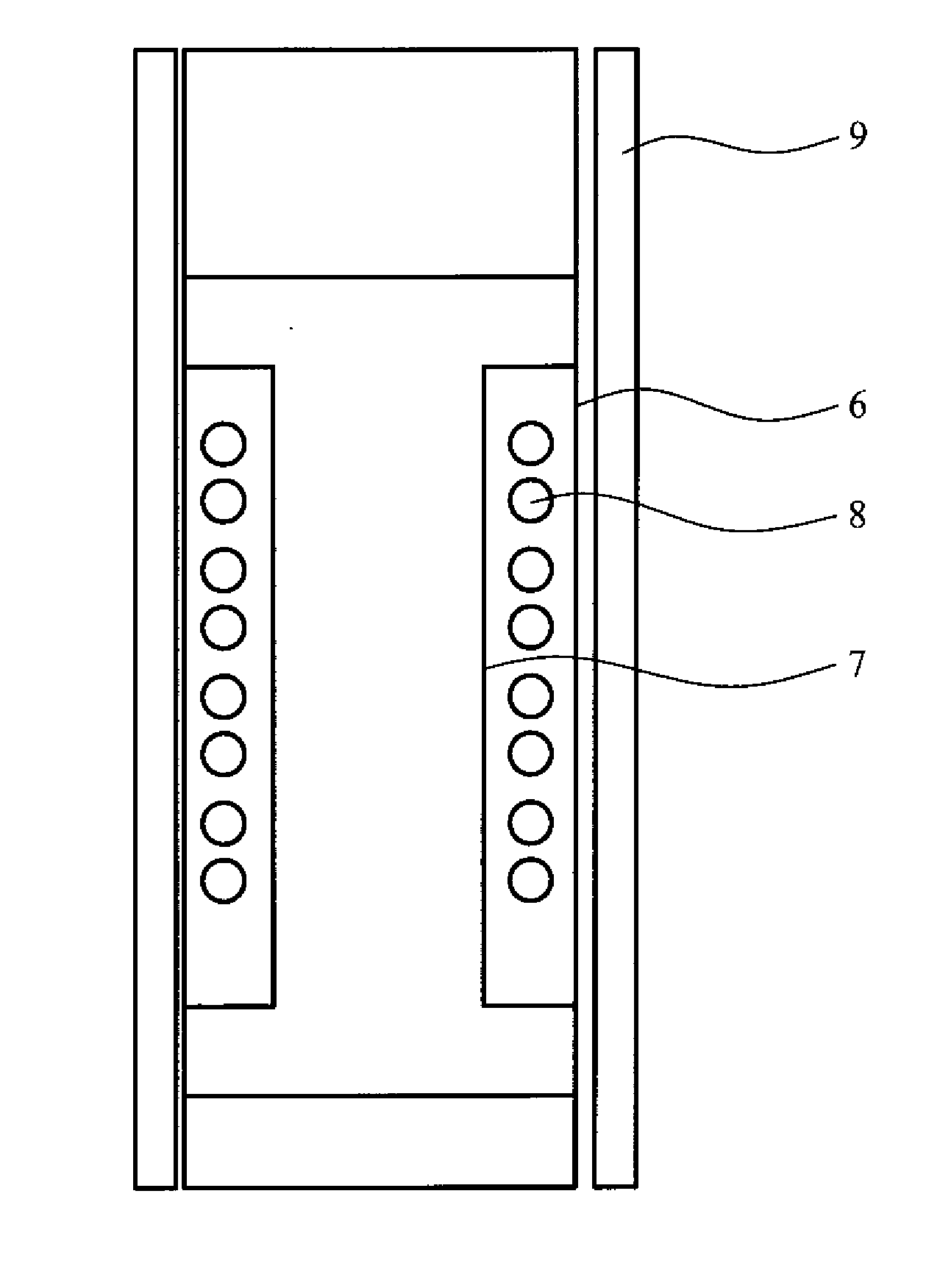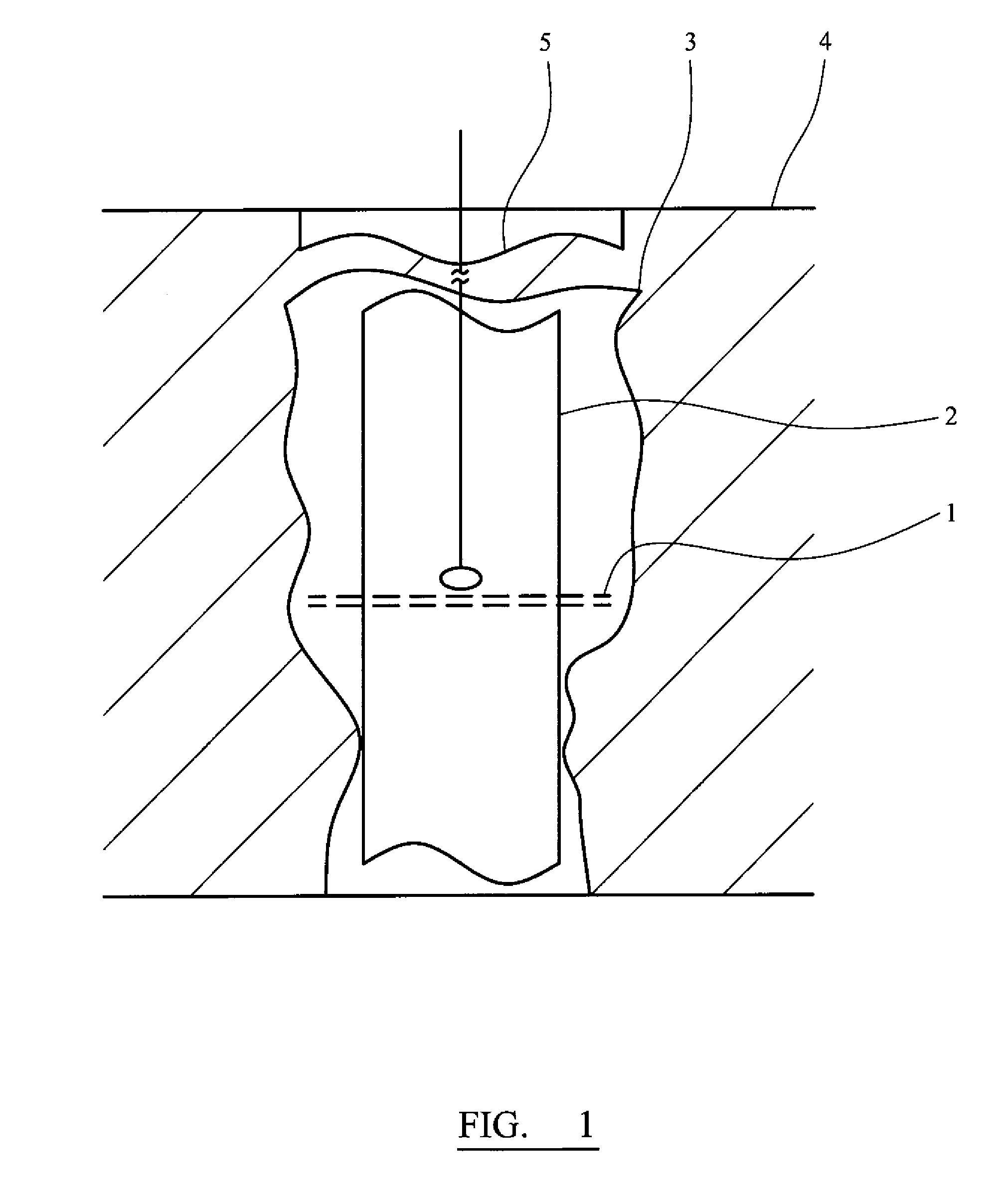Method of determination of a stuck point in drill pipes by measuring the magnetic permeability of pipes
a technology of magnetic permeability and determination method, which is applied in the field of oil drilling industry, to achieve the effect of reducing the cost of emergency maintenance works
- Summary
- Abstract
- Description
- Claims
- Application Information
AI Technical Summary
Problems solved by technology
Method used
Image
Examples
example
[0092] A specific example of implementation of the method of the present invention on a pilot unit, using a steel casing string 155 mm in diameter, is given below. The tool is run into the casing string in the same manner as is described above in relation to FIG. 2. The casing string is 1840 m long. After the first pass of the logging tool, the free point was determined at a depth of 1170 m from the surface. The pipe was loaded by being stretched, using a force equal to 0.95 of the ultimate mechanical strength. After the second pass of the logging tool, the free point was determined more precisely at a depth of 1158 m from the surface. Actually, the free point was at a depth of 1158.1 m.
[0093] The accuracy of the stuck point depth determination corresponds to the accuracy of the depth determination system of the logging tool used (i.e. ±0.15 m in the above example, assuming 0.15 m separation between logging stations).
[0094] Changes may be made while still remaining within the scop...
PUM
 Login to view more
Login to view more Abstract
Description
Claims
Application Information
 Login to view more
Login to view more - R&D Engineer
- R&D Manager
- IP Professional
- Industry Leading Data Capabilities
- Powerful AI technology
- Patent DNA Extraction
Browse by: Latest US Patents, China's latest patents, Technical Efficacy Thesaurus, Application Domain, Technology Topic.
© 2024 PatSnap. All rights reserved.Legal|Privacy policy|Modern Slavery Act Transparency Statement|Sitemap



